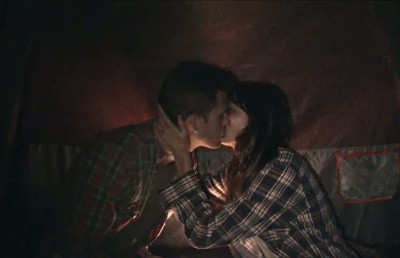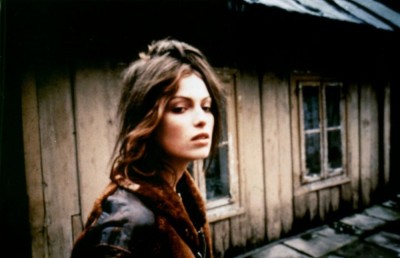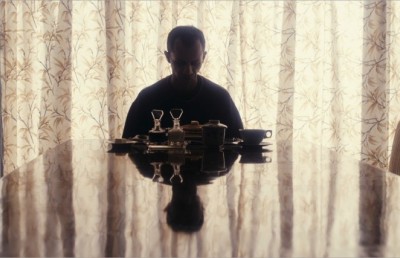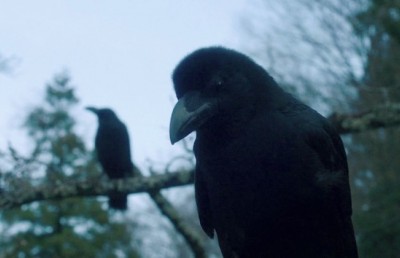Narcisa Hirsh and Argentine Experimental Film
An Interview with Narcisa Hirsh
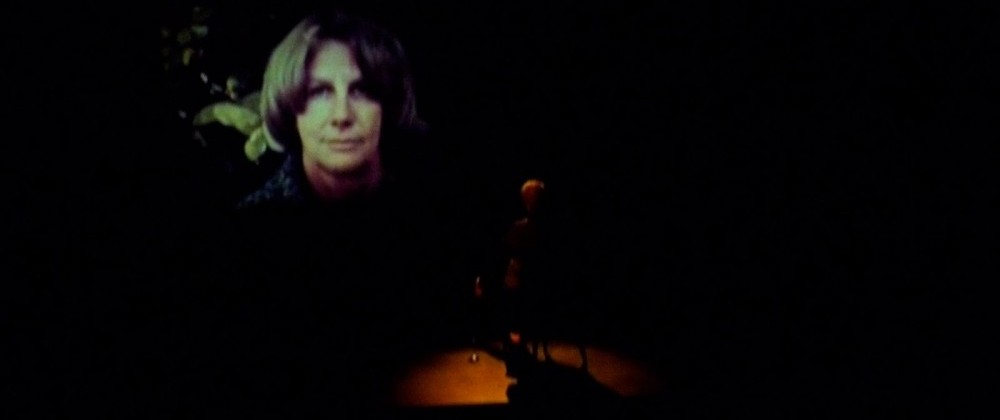
Prior to visiting the 14th edition of the Buenos Aires Festival Internacional de Cine Independiente (BAFICI) in April 2012, I was told by a friend of a friend, Carolynn Rafman, a Montreal artist/teacher, that there was a very interesting Argentine, female, experimental filmmaker who was finally being granted an international career retrospective at BAFICI. She put me in touch with Narcisa Hirsch, and we planned to meet. On 14 April, I interviewed her at her home. On April 13, I had watched the first of five programmes of Ms Hirsch’s work, including six short films from the 1970s, shot mostly on Super-8, and shown on Betacam. Most of them are referred to in the transcribed interview (below), where, in brackets, [], I provide details of running time, and year produced. After the interview, I was able to watch three more of the programmes including the two 16mm sessions, the first of which included her earliest filmed records of “happenings,” Manzanas (“Apples,” 1966, 10 min.), shot by Gerardo Vallejo, and Marabunta (1967, 8 min., see below), as well as Taller (1975, 11 min.), which programmer Diego Treratola called, “arguably the first Argentine structural film ever made” in the BAFICI catalogue.
Seeing her work was a revelation, and I’m pleased to note that, since this time, she has been honoured with retrospectives at the Viennale (Vienna International Film Festival) in October/November 2012 (curated by Treretola), the Goethe Institute in Toronto in June 2013, at which time she also had an onstage “dialogue” with Michael Snow at the TIFF Lightbox. In addition Professor Andrea Giunta, of the University of Texas at Austin has written a scholarly article on her work for alter/natives, the Latin American Cultural Studies Journal of Ohio State University, in early 2013.
I have had absolutely no luck in trying to purchase a copy of the antennae collection of Argentine Experimental Films and Videos (see below) that surely went out-of-print immediately after it was published in New York. However, there is a DVD collection of 11 of Narcisa Hirsch’s films published by MQ2 in Buenos Aires. Their website provides the following biography:
Narcisa Hirsch (Berlin, 1928), a pioneer of experimental cinema in Argentina, produced continuously in various media since the 60s. In the beginning, as a painter and illustrator, her works were exhibited at the Gallery Lirolay, which, like the Instituto Di Tella, was the most important art gallery in Buenos Aires in the 60s. She conducted performances and happenings, and was part of the group of filmmakers formed by Marie Louise Alemann, Claudio Caldini, Horacio Vallereggio, Juan Villola and Juan José Mugni, exhibiting their films outside the circuit of theaters and institutions, with the exception of the Goethe Institute, an organization that during the last military dictatorship in Argentina accompanied this movement and gave a formal context to it. Narcisa Hirsch has published several books and nowadays performs live film projections and installations.
Because I took so long to transcribe the audio-taped interview, some of the information contained in it has changed. I note a few updates in brackets. I also add some missing information in the same manner. Rumour has it that Diego Treretola, arguably the most innovative film programmer working at BAFICI, was fired last year!
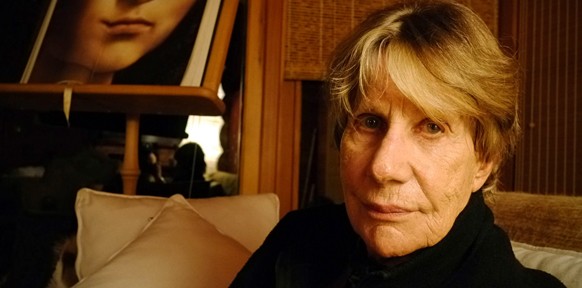
*Narcisa Hirsh
Offscreen/Peter Rist: I met Diego Treretola, who programmed your films, in Vancouver years ago. He goes around the world. We chatted, and when I came down here two years ago, on my own to go to the festival, he was very nice to me. I had a friend from Toronto who was programming Chinese documentaries here [Shelly Kraicer], and I came to see his films and I came to see Latin American films. I was very impressed with the festival, actually, and I know that you’ve been saying that Buenos Aires is chaotic, compared to Canada. I don’t know, I’m from England, originally, and, are you from Germany?
NH: Yes, from Berlin. I came here before the war [World War II]. My parents were divorced. My father was a painter, and he was half-Jewish, and my mother was not Jewish, and, I came over because I had an Argentine grandmother, born in Argentina, and, we came over before the war meaning to stay a year or so, and then the war broke out. Otherwise we would be sitting in Berlin, now, having this interview.
Offscreen: I immigrated to Canada in 1965. Since then I was living in the West Indies for a while, then I was living in New York City. Somehow, I keep coming back to Montreal. I am teaching at Concordia University.
NH: Are you a filmmaker, too?
Offscreen: No. I am a film studies professor, a historian not a filmmaker, but we are situated in the Faculty of Fine Arts, so I’m very happy about that connection. So, actually, we have a lot of experimental film and some experimental filmmakers who teach at Concordia, and a couple of the students who are on this trip are also interested in experimental film. One of them is interested in Jewish film and is studying Edgardo Cozarinsky, who was the same generation as you, I guess. So, if you could talk about the Di Tella Institute, and your background in filmmaking, please.
NH: If you are really a historian, it is quite interesting what is happening now because as film happened, “experimental” film was nothing that anyone invented, it came from the beginning, it started out with [Salvador] Dali and [Luis] Buñuel, and in Germany at the Bauhaus, etc. And, then it was interrupted by the war. So in Europe, there was no more experimental film, obviously. It moved over to the United States. When I got in touch with experimental film, it was going very strong in New York. In New York and in California, where there was Maya Deren, without mentioning the ones that are mostly well known. Before I was in New York, in the 1960s I had never seen anything like all the experimental films I saw there, at places such as the MoMA, and they had a big exposure and they had places where people could go and see these films like the Millennium [Film Workshop].
Offscreen: I went to New York University, so I studied there for four years, and did my PhD. I was there at a very, very good time, between 1977 and 1981, so as well as Millennium they had the Collective for Living Cinema, and Anthology Film Archives, so they had at least three screening rooms devoted to experimental film.
NH: And back then they had Jonas Mekas writing in the Village Voice every week about experimental film. It was a strong movement at the time, and a very polemical one. Experimental film was a political issue; it was underground film; independent film. In Argentina, as usual, this movement sort of drifted down, and came a little later. So I, who was coming from painting, and, as I said, there was Di Tella, and there was a lot written about the movement. American researchers have written about Di Tella; and he was a guru, and he said that “painting is dead.” That is, painting on the easel, the painting that we have known so far, that’s“dead.” I wasn’t in the [Instituto] Di Tella; he didn’t want me, so I was out of that. But, I listened to him because he was a very influential man. And then, I said, what I wanted to do was go out on the street. And so, with two other friends, we went and did what was called at the time, the “happenings.” So, I said, I don’t need the Di Tella Institute, I have the whole city for myself. I can do what I want to do and, we went out and did it. And then, one of the bigger happenings that I did, which was called “La Marabunta,” a huge human skeleton, very large, covered completely by food, and inside we had live birds and parrots, etc. It was painted widely with colours. And we showed that Marabunta, the skeleton, we put it up for the opening night of the film Blow Up [Michelangelo] Antonioni’s film [UK, 1966]. This was October, 1967. I needed somebody to document that. I said to a friend, “let me have a filmmaker or a cameraman.” Give me a cameraman because I want to register this “happening.” And he sent me a young man. This was a very political time. In 1967, the military were not yet in charge, but we were already having a lot of political tension and trouble in Argentina. We didn’t know the young man, but we found out later that he was one of the Monteneros [leftist, urban guerrilla group], and he was killed eventually by the military. [Raymundo Gleyzer] But he did this film. He filmed it, and we edited it with him. This is where I started filmmaking.
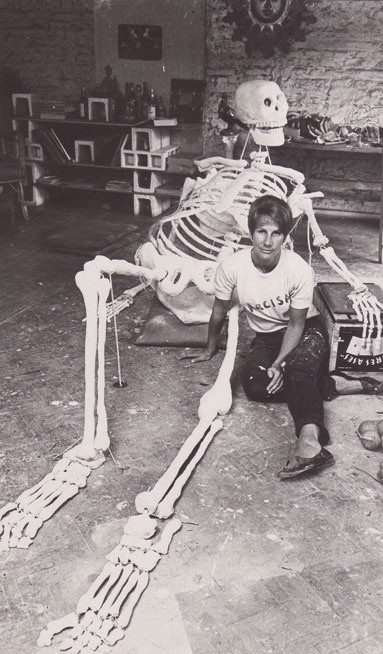
Marabunta
So I started out filming in 16mm. My husband, Paul, had bought a 16mm camera at some point. And then, Super-8 came up, like video now. It was cheap, it was easy; you could develop it in a few days. It was very easy in Buenos Aires. So I started out in 16mm and then Super-8, and then, suddenly there were other people who were gathering together because they were also doing Super-8. And, we were screening these films more or less together, in very odd places. There was a cellar where people would meet. There was nothing like a cinema or a museum, or a cultural institute for us. But, everybody would do his or her film, and then we would exchange the cameras; sometimes one would act for the other. This started out after 1968. After ‘68, I started filming, first in 16mm and then in Super-8, and I was still going on doing all these happenings. What I’m going to do tomorrow at the Plaza San Martín is [a repeat of an earlier performance] giving away of the apples. We’ll just stand there and give the apples away, and somebody will take photographs. [In the past] Nobody would ask “who is it for” or “what is it for,” we were like sleepwalkers in a way. It was a political issue. But it was a completely different political issue compared to the ones that were really taking place, because there was also “political film” in Argentina, like that emblematic film La hora de los hornos [1968] for example, which had nothing to do with what we were doing. So, at the end of all this, we were a very small group, like, five, six, seven people, who would be filming in Super-8 and doing our screenings, sometimes at the Goethe Institute, wherever we could come together and show these films.
Then Super-8 died. This was at the beginning of the 1980s, because video was coming up, and at that point, this group was sort of dispersed. They were doing other things; the best known of them is Claudio Caldini: he did some video work, but, the others didn’t. And, I then returned to 16mm, in the beginning of the ‘80s, and did a few films. I even did a feature film in 16mm. That lasted until the 1990s, and, by that time, most of what we had been doing was forgotten. And, there was nobody who would pay any attention to that. I did a bit of writing. I wrote two books. I did graffiti on the street. In 1982, for a whole year by myself, I wrote on walls. The military people were still in charge, and that was a good thing in a sense, because all the walls were free. There was no political writing on the walls because it was forbidden. I would write my sentences like, say “Life is what happens to you while you are doing something else.” And so nobody paid any attention to that because, what did it mean? It was a new thing because nobody was writing on the walls. I did that for myself and then in 1983, the military people left, they were chucked out, and, so called “democracy” came back, and, well, I stayed on doing. Now I’m using a lot of footage that I have in Super-8 or 16mm, and if I want to film something new, I’ll do that, generally in video, and it ends up being a DVD. So, I’m not using Super-8 or 16mm anymore, except for BAFICI.
When Diego came to me and invited me to the BAFICI. He said, “I want to show some of your films, in film.” And this was a very bad moment for me because I had to go back to my old films, screen them for myself, check to see if they were in good shape, which they weren’t, and he wanted Super-8 too, because young people want to see the “films.” They want to feel the material of it. And so I said, “No: my films in Super-8, I can’t give them to you because they are too fragile, and they are not projectable, and also the sound is very bad.” If you remember, Super-8 sound film, it has a very narrow magnetic band attached to it. So they are actually showing some of the films in 16mm, while the rest goes in DVD. A few of the younger people here now are working in Super-8 now, but they are doing “performances,” with Super-8. They are not filming films and showing them in movie theatres. They are doing performances in Super-8. There’s a man named Ernesto Baca, who, a few months ago, made a performance with eight Super-8 projectors, and with live music, and that was very interesting, what he did. And, Claudio Caldini, who was one of the main filmmakers of our original group, he has also made several performances, using different projectors, and screening different films at the same time. And, I myself have been screening by mixing video and film. For example, I had a film in 16mm, I would screen it in video, with a large image, and then, a smaller image, and the 16mm print would be screened on top of that same film in its video copy, making a superimpression.
Offscreen: One of your films that I saw was like that, where you projected the image of a woman walking in the snow, on a man’s body. I said to my students that you must have shot the film of the woman walking in the snow, and then projected it on a man’s body, and then filmed that projection.
NH: Yes, I did that.
Offscreen: It looks like superimposition, but, I realized that you must have done the projection thing.
NH: That was a real filming on the boy’s body; he was my son. I mis-use my own children. [laughter] I projected a Super-8 film while he was standing there. But now we do what I call a “binary projection.” Actually, I have the same film in both formats, in 16mm and in Super-8. But, this is now. This big “experimental” movement as I knew it in New York, and you knew it too, living there for four years, too. I mean, that’s over. The vanguardia, the so-called avant-garde is dead. There’s no more of this, because I have experienced a situation where people would say,“well, my four year-old son could do better things than what you are doing!” I’ve seen people at the MoMA in New York, getting up in the middle of the films and protesting, for example, a film by Michael Snow, called Wavelength [Canada/U.S., 1967].
Offscreen: Yes, well we show that to our students. In fact, we recently bought from Michael Snow a new print that he made for us. So, we spent a lot of money to actually get that film on 16mm, because we show it to our first year, undergraduate Film Aesthetics course, on 16mm. [In the past, we always rented it.]
NH: Really? You know, I have a 16mm copy of Wavelength. At some point, it must have been in the ‘80s, I went up to New York, and I bought a few films from a small American cinémathèque [distributor].
Offscreen: Anyway this is very interesting, because what you are saying about multiple projections, this is something that is active in Montreal. We have a group called Double Negative, mostly former students of ours. They have this collective and they occasionally do these performances. There is one filmmaker/projectionist [Karl Lemieux] who will project film loops, running them differently. But what he does with one of the films is that he burns frames of a piece of film. It is very impressive; they had this loud music by an impromptu band called “Jerusalem in My Heart”. They get together for these particular events. So, Montreal is still very active when it comes to avant-garde film and music performance.
NH: It is not like the original experimental film movement, because, what you are telling me now would be like a unique performance on just one day, that can’t be repeated because the film is burnt and the performance is over.
Offscreen: Yes, absolutely.
NH: It is a unique thing, like a “happening,” again.
Offscreen: So, just to go back a little bit. I’m curious about how your group was able to keep making films during the military dictatorship. I know you said you weren’t exactly “political,” but, it seems to me that everything I saw of yours today can, in some way or another, be considered to be “political.”
NH: I consider that art as far as it is really “art” is always “political.” It is different in the sense that it makes a different statement. In making a film like Michael Snow’s Wavelength if we take that as an emblematic experimental film, that lasts something like 45 minutes, or so, you have one zoom! This is a statement, the avant-garde disciplinary statement. It is a different political statement from the one that the Montoneros or other “politicians” would say because they have a different speech. But, avant-garde art is political! In that sense we were “political” but to the military people who were in charge at the time, we were invisible. They wouldn’t understand what was going on, at least not in reference to themselves. I did a few happenings where they did interfere, because with the Marabunta in ‘67, the police came, and wanted to close down the movie house, but only because there were so many people around the whole thing, a big gathering, and also I did one happening by myself, completely by myself, where I gave away tiny dolls, like the ones small children play with, and I did that “happening” in three different cities, in Buenos Aires, in London and in New York, exactly the same; 500 baby dolls. I had that filmed and that is something, maybe, that you already saw? [Bebes (1974), 11 min.].
Offscreen: Yes, that is really interesting, that film, dealing with the body and childbirth, and it is very ahead of its time, I would say, in terms of how you are dealing with the woman’s body.
NH: I don’t think it was ahead of time, if you compare it with what was going on in the United States at the time. My acquaintance also came with my buying a feminist film, one by Carolee Schneeman.
Offscreen: I was an editing assistant for a while at Millennium Film Journal in New York, and we had to pick images for the cover for an issue on Carolee Schneeman’s work. She was with me, and it was all hard-core, kind of, sex, but you couldn’t tell that and, she was going frame-by-frame, and saying things like, “that’s a good one of a penis,” and I couldn’t even see what it was. She was a real character.
NH: Exactly, she’s a “character.”
Offscreen: So, you have one of her films?
NH: I have Fuses [1964–67].
Offscreen: The current Chair of the School of Cinema at Concordia, her name is Marielle Nitoslawska, and she’s made a film with and about Ms Schneeman. So we have connections. [laughs] [Marielle is no longer Chair]
NH: I think she is still going, in New York.
Offscreen: Yes, she’s still alive and doing stuff. When you say “feminist avant-garde film,” most people wouldn’t even say Fuses is a “film,” or if they agreed it was a film, they would not know what it was dealing with, what the subject was. At least, with your work, it is fairly explicit; you know what you are looking at.
NH: Well, compared to what was happening in Europe, in France and Germany, and, especially in the United States, Argentina didn’t have a feminist movement, I would say, perhaps very small. I was not, and I am not a “feminist,” I would say. That was not a political issue for me. But, I am interested in the “feminine,” which is a different thing; being feminine.
Offscreen: Well, Bebes, and the last film they showed today, Mujeres [1979, 25 min.] and also the film, where I guess a friend of yours died, or a child died, a testament of some kind.
NH: Testamento y vida interior [1977, 11 min.]
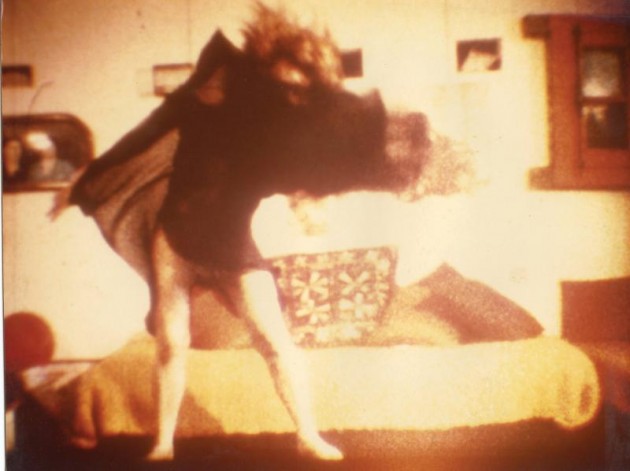
Testamento y vida interior
Offscreen: Yes, well all those three films seem to me to be feminist, whether you like it or not. In fact it is what I thought about your work that was very advanced for its time, especially in the context of Argentina.
NH: It was advanced for Argentina, but, probably not so advanced, compared to the United States, etc. It is interesting what you say, because you come from abroad and you come completely fresh; you haven’t seen anything before, and you don’t know our story, and you see that now, with the perspective of having been in contact with all these people in New York at the time. So, it is interesting that you see it now, and for me it is interesting to hear this.
Offscreen: Well, you’re using Nina Simone’s song, for example. From my own personal experience (that I won’t relate here) I know that Nina Simone was an extremely strong person, and in your last film you ended with an aria, I think, where we understand from the diva tradition in opera that a woman can be really important. Even, to some extent, in terms of your choice of music, we can find a certain amount of feminism, there.
NH: What I used there, I think, is not an aria from an opera. What you heard in Mujeres is one of the four last songs by Richard Strauss, the German composer.
Offscreen: I thought it sounded distinctly operatic.
NH: It sounds that way because it was an opera singer.
[Back then in the 1970s] It was not like today where everything is fine, and students will listen to everything and say, “ah, this is interesting,” and they don’t get upset. I gave a conference at a film school, here, right around the corner. I was telling the story about the films we did, and how mainly we were screening them with very few people. Nobody would ever buy them, and there was no money involved; it was very cheap to do them in Super-8; anybody could do it, like video today. And then students would ask me why did I do all this, all that filming for nobody. And I would say they were “ideologies,” and another student said that today we have new “ideologies” in that everything is fine, and that one has to do something that one can sell.
Offscreen: Well, I’m happy to say that Montreal is not like that. Toronto is like that, but not Montreal, which is one of the reasons I like to live there, because not everything is driven by money. But, I think there a lot of similarities between Buenos Aires and Montreal, in terms of peoples’ lifestyles. Like, life is more important than money. [laughter] That’s my sense, anyway.
NH: It is true that we get a lot of things free in Buenos Aires, not so much in the movies any more, but in theatre. There are so many small independent theatres where you can see very good theatre in Buenos Aires, and you have all these actors and all these directors of these plays and they do it for nothing. They don’t want anything, and they do it for free. It’s incredible. You get more theatres here in Buenos Aires than in New York, possibly.
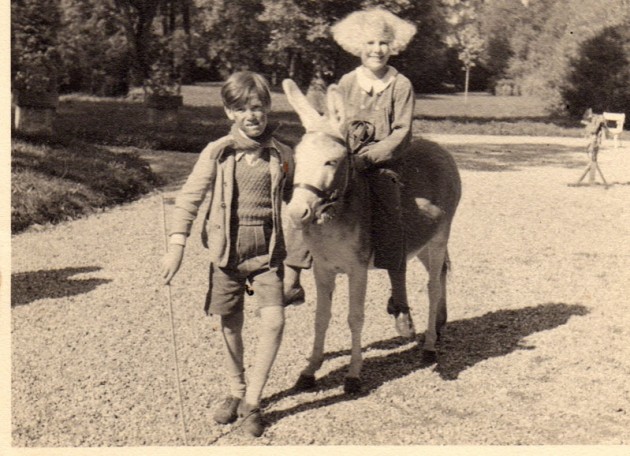
El Mito de Narciso (2005)
Offscreen: Just walking along Avenida Corrientes today, after taking the students to the Chiquilín (a place which I really liked when I came here two years ago) to take the students to a real steak house, I came here. (Sorry, I was a bit late taking the subte) Corrientes is very exciting with the theatres and all those bookstores. This is very similar to Montreal, and, it is not money that is driving any of that.
NH: Money is obviously very important in Argentina, but there is a great part of Buenos Aires, especially where money doesn’t play that much of a role. That’s true.
*Offscreen: I especially wanted to talk to you because of the whole avant-garde, experimental film thing, which nobody has written about in English. Now one of my friends is Timothy Barnard who wrote the first book in English on Argentine cinema, and he actually referred to 1969-1972 as being this brief period of experimental film in Argentina, and he mentioned Cozarinsky, and I believe he may have mentioned Invasión, this film directed by Hugo Santiago in 1969. I know this work was different, but, still it was “experimental.” So, you weren’t part of that movement? *
NH: Nobody in my group was part of that. That was more “independent” film. I call it “independent,” because it was still narrative film or documentary, feature films done in 16mm or 35mm. While what I call our “experimental” film was exclusively done either in 16mm or Super-8. 80% of that was done in Super-8, and that was done by the filmmaker, herself or himself, without any assistance, without a cameraman. And, you would do the whole thing. You would film it, you would act it, you would edit it, you would put sound to it, and, you would project it. And, at the end, you would fight for it with the public. So, you would do the whole job. In that sense it was really “home movies.” Everything was done at home.
Talking about coming into the limelight, there is a DVD collection produced in New York, which includes Argentine “experimental” film and video. There is one of my films in it, and, this you can buy in New York. My film has sound by Steve Reich, one of the favourites of everybody, and that was done in 1972 or ‘73. [Come Out, 9 min., elsewhere dated at 1971 and ‘74] I went to New York and showed it to Steve Reich, and, he didn’t like it all, because I had cut three minutes of his sound. This just came out, combined with a book, and it is called Dialéctica en suspenso: Argentine Experimental Film and Video. There are two DVDs. One is exclusively original video and one is exclusively original film.
Offscreen: So, who in New York put that out, then?
NH: A man called Leandro Illiado.
Offscreen: I know, when I was a student in New York, there was an Argentine experimental filmmaker living there, who never really went back to Argentina, named Leandro Katz.
NH: Ah, but he is living here now. He is a friend of mine. He was here, yesterday! Yes, he was an experimental filmmaker in New York.
Offscreen: Well, we had a so-called “Point of Contact” with Latin American cinema when I was a student at NYU. I was involved in this and we showed his work. We also showed some “udigrudi,” underground films from Brazil. That is something that I like about BAFICI as well; that you get to see “experimental” films from all over the world.
NH: I have Leandro’s telephone number. He travels a lot, but, I know he is here.
Offscreen: I remember thinking, if he’s doing work like this, he’s not really “Argentine.”
NH: Well, he came back to Argentina when his mother died. He probably inherited something. He has a very nice flat in town. If you want to know more about the history of the avant-garde, that is “our” avant-garde, it was completely undocumented. You won’t find anything at all written on it.
Offscreen: When I came here two years ago, I was not expecting BAFICI to be so interesting as an “international” film festival. Sundance is supposed to be “independent,” but, to me that is not an “independent” film festival. This is “it,” because all of those “avant-garde” and “experimental” areas. People who come here from North America like BAFICI a lot. Mark Peranson edits Cinema Scope, a Canadian film magazine, and it is very interesting because in every issue I pick up there are filmmakers that they are interviewing or writing about that I’ve never heard of, so they really cover [everything] and part of the reason is that they go to festivals like this. And, there is a critic, who writes for them, and who I like, called Robert Koehler—he’s actually here this year, I think he might be on one of the juries; actually he is doing the thing with Jim Hoberman on Jack Smith’s Flaming Creatures. So I’m going to go to that. They are doing a kind of a conference, Koehler and Hoberman. So, Jim Hoberman was a film critic when I lived in New York in the late ‘70s, and early ‘80s. I used to swear by him. He was also an experimental filmmaker, who became a critic. So, whenever he would write about film, he was writing about the medium [of film]. He would always insist on doing that.
So this is kind of a good moment then for you, really.
NH: Well. Yes. I’m not really used to that much exposure. But, I was very happy with the way things worked [at BAFICI]. This was freedom, I can tell you. I wasn’t dependent on anybody. I was a fairly bourgeois woman who lived with my husband and my children. I didn’t have to work for my living. I could do these films freely. I started out painting, and then, we did the happenings out on the street. In a way, it was scandalous because a woman in Argentina at that time didn’t go out on the street and give away apples, much less baby dolls. It was a very good time.
Offscreen: But, it is funny because right now, at this time, women are better placed in terms of Argentine filmmaking, than almost anywhere else in the world. I realize that it is still a battle. I guess, probably because Lucretia Martel has become so famous, and, for me, all three of her films are really amazing as films, but there are many others: Ana Poliak—I’m actually in touch with her, so I’ll get to meet her as well—although she hasn’t directed a film for a while, since Parapalos (Pin Boy, 2004) was her last feature film, then there’s Albertina Carri. Anyway, there’s quite a few young, emerging Argentine women filmmakers, as well. This is very impressive, especially because I think that the world of Argentine film criticism is very macho, like this guy Quintín. I wouldn’t say he’s against Lucretria Martel, but he has these guys, for example Pablo Trapero and Lisandro Alonso, who are like his “buddies.” [They are terrific directors] But, you know, I think it is a bit of a problem. Now there’s Raul Perrone: I’d never seen any of his films. He’s the really low budget filmmaker. Well, I finally saw his latest film, yesterday [Las pibas, 2011] and, there was all this applause at the end of it. I was thinking, you know this is just like_ porno miseria_ or something, and, it’s a guy making a film about young women, and you just know one of them is going to be raped. And, I’m wondering, why is there all this support for him? And, stylistically, actually, his work is kind of a low grade Pedro Costa, a Portuguese digital filmmaker who is very interesting and who works with marginalized Portuguese Africans in Lisbon. So, stylistically Perrone is borrowing from him, I think. There is a young woman filmmaker, Delfina Castagnino whose first feature was shown here two years ago. I’ve forgotten the title, [Lo que más quiero , What I Love the Most, 2010] but it is about two female friends who become alienated, and they eventually come back together. It’s a very interesting film, and she had worked as an assistant to Alonso. Yet, no-one is really talking about her film, but I thought that was the best film I saw here two years ago. She is another woman who doesn’t get the same attention as someone like Perrone. There was another woman, her surname is Morgenthaler, I think, [actually, Milagros Mumenthaler] and the English title of the film is Back to Stay (Abrir puertas y ventanas, 2011), and she won the top prize at Locarno last year. Her film is very good, also. But, no-one is really talking about that, either.
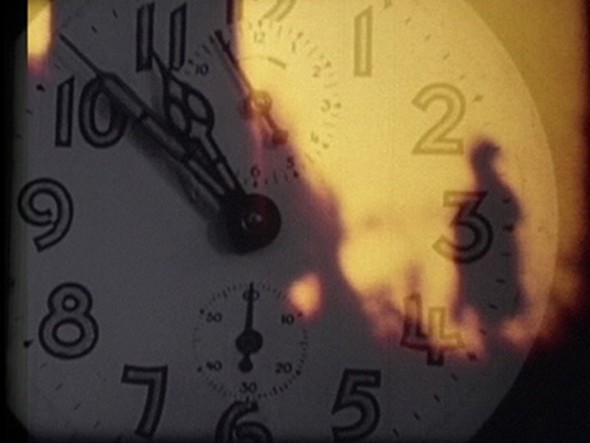
El Mito de Narciso (2005)
NH: I am not familiar with that film, either. But, it wouldn’t be an experimental film?
Offscreen: All of these films are feature films, but, they are interesting as films. I would call them “experimental narratives” or something. They are not short “experimental” films that are completely focused on the medium. Well, Lucretia Martel: I think her films are somewhat experimental.
NH: Yes. Well, she brings in a very artistic touch in the narrative, especially the first one she did, La ciénaga [The Swamp, 2001].
And from a different point-of-view, it is interesting that one can find somebody coming from somewhere else where you don’t know anybody, you just look at it with fresh eyes. “The act of looking,” as Brakhage says; we met Brakhage; I say “we” because I went with a filmmaker friend, in Toronto.
Offscreen: Well, he was living with a Toronto woman, for a while.
NH: He was there and, I acquired one of his films, when he filmed his first daughter, Window, Water, Baby, Moving [1959].
Offscreen: This is awful for me to say this, but your Bebes film, I thought was like a feminist Window, Water, Baby, Moving. [laughter] Anyway, there are touches of that film, and touches of Maya Deren, also in your work.
NH: I was much influenced by, everything. I have a lot of different frequencies of different films in my work; footage from Herzog that I just took…
Offscreen: Well, The Great Ecstacy of the Woodsculptor Steiner [Germany, 1974], clips from that, and from [Carl Dreyer’s] Passion of Joan of Arc [France, 1928].
NH: Herzog: I have quite a lot of his material.
Offscreen: Even that [use of Steiner] was feminist because women don’t ski-jump. It is such a male thing; such a “romantic,” dangerous, adventurous, male thing to do. To jump off a hill on skis, right? Women do it now, as one of my students was telling me, but not in the Olympics, it’s just men. For me, that was a statement. I’m interpreting that gesture as being feminist. But, I didn’t realize that was actually his film that you were using.
NH: It was his film, and so I just took footage as I found it from the film. I filmed from whatever I could find. This was in the Steve Reich film, Come Out.
Offscreen: So you sold it in the U.S.?
NH: To this young man who edited it and who apparently financed it, I don’t know. He works in a photographic museum in New York and he wants it for museums and universities, mainly. In the states they do so much research, in general.
Offscreen: I am amazed that you have a German accent, when you speak English.
NH: I hear it, and in Spanish I have a German accent too, for those who have a subtle ear they notice it. But, in English it is more so because I learnt English when I was already an adolescent, and I learnt it because I went to an English club. I didn’t go to English school (I didn’t go to school, to start off with), so I learnt it on the way. At a certain time in my youth, I spoke a lot of English because I had different friends and they were coming from Austria, Hungary or England, and then it would be the main language spoken. And these people are gone. And, so I don’t speak much English any more. I’ve lost a little bit.
NH: I suggest that you get yourself to some bookstore to get some stuff on L’Instituto di Tella, on Av. Corrientes. Tomorrow they will be open.
Offscreen: Because I am not reading art history, but, rather film history, in which there is nothing.
NH: Also in the [United] States you would find something. If you go on the internet and search for Di Tella, two words. That was an interesting time for Argentina in art and the visual arts.
Offscreen: You weren’t connected to the independent theatre at all, were you?
NH: That was something else. I mean, I go to the theatre.
Offscreen: I know there was an avant-garde theatre, as well, at the time.
NH: They would come over to our things at San Martín, which I believe is the place you are going to tomorrow. People were fairly in touch with that, but, theatre is much more difficult because unless you are at the place, you can’t see it, you have to bring everybody over.
Offscreen: I have a couple of questions about what happened with the transfers. The first film in the programme today was Patagonia [1970, 10 min.], and that looked very strange because it was very red, so I assumed that by the time you transferred the film to video, the colour had gone, right?
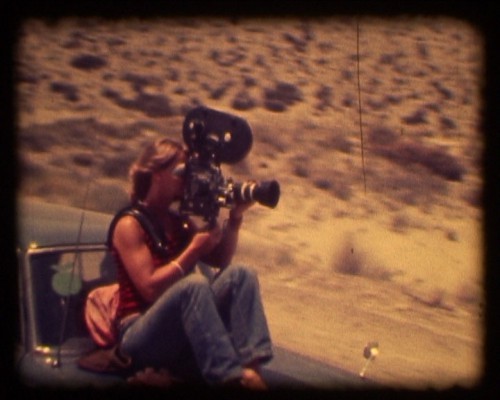
Patagonia
NH: Possibly. Because I have two Patagonia I have one in 16mm and one in video and the end result of what you saw today on DVD was a kind of mixture of the two versions, and the red light that went into it is because—it didn’t fade that much, the colour on the whole, especially in 16mm—it is a redoing of the original Super-8 or 16mm.
Offscreen: There is also the situation where you have this circular, kind of a mask [effect]. It reminded me of a time once when I went to this independent film place to project film and they didn’t have the right lens, so everything was in this “circle,” but I wasn’t sure to what extent that was deliberate [in Patagonia] and to what extent that came through the transfer to video.
NH: I can’t really tell you, because I would have to see the film, but originally I did a lot of “cooking” with the transfer. Video now is fairly easy, because you do it all in digital, but at the time when there was no digital, I did filming, while putting cookies in front of the lens. I was using hot ice or white ice that you buy when you want to keep something cool, and you put water on top of it, so you have fumes coming off, so I used that as a screen.
Offscreen: Technically, stylistically, one of the most interesting aspects of the work that I saw today was to do with the surface texture, so that it was hard for me to tell what that was supposed to look like when it was transferred to video. For example, in the beginning of “The Descendants” is that what it’s called? [Descendencia, 1971, 15 min.] you have a statue of a woman, and it looks to me like the woman’s face is under water, perhaps because of the video lines, but it is an interesting effect, because later, in one of your other films, you definitely had somebody under water. Digital is pixels, but video is lines. There is a different quality to the look.
NH: I would definitely have to see the original again. Part of Descendencia was originally shot in 16mm film by the husband of my grandmother. This was in 1928.
Offscreen: On using different surfaces. So, I’m talking to my students while watching the film and one of them is interested in found footage, so in Descendencia, it looks like the material is old, but we didn’t know if that was your family’s footage, or….
NH: It was my family’s footage. It was not “found” because it was already there in my family. My grandmother is in it, my mother, me, and my children are in the film, and I believe that one of my grandchildren is in it, also.
Offscreen: Yes, it’s nice, it is like an experimental “home movie.” In fact, “home movies” are very popular now. It is a new thing that we are starting to show old “home movies” in our film history classes. As a different approach to film history, you look at amateur films that ordinary people have made of themselves.
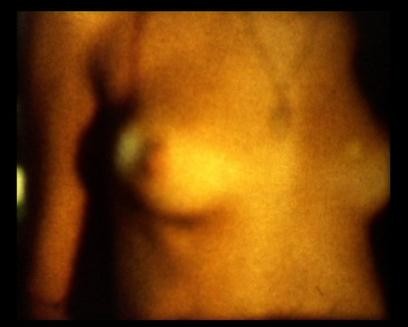
Ama Zone
NH: This sounds a bit like This Is Not a Film, made by Jafar Panahi [Iran, 2011].
Offscreen: That is such a brilliant film. I interviewed him when he came to Montreal. He was the head of the jury and he made a big mistake. It was when they had the “green” movement in Iran, protesting the government, and he got all of these Iranians in Montreal to wear green, and, all of this was filmed. He went back to Iran and then he was arrested. And, he has been in trouble ever since. Anyway, this is a very clever film, because it was shot on the day that is the Iranian New Year, which is the first day of spring. So, there are all these celebrations going on outside, but it sounds like a war. So, he’s filming in his house, but, it sounds like the war is going on outside, but, it is New Year. I was fortunate to go to Iran. I was on a jury at the Fajr film festival, four years ago, and that was very interesting, because the people were wonderful. I would visit people’s homes, and they were so hospitable, but, the government is awful. Everybody in Iran is living a kind of secret life in their own homes. On the street, it is completely different; women have to wear all these clothes.
NH: And this man [Panahi] didn’t he get into even more trouble over this film, which was smuggled out of the country?
Offscreen: Yes, in a cake [on a usb key] to the Cannes film festival. So, it is very low grade digital. It is all about the fact that he’s not allowed to direct, and he’s not allowed to write, and so, he gets a friend to film him acting out a script for a film that he’s not allowed to make, and, it’s all about imprisonment. Effectively, in his own house, he is in prison. So it’s as if he’s making a film about being in prison, while he is in prison.
NH: So I read about this and it sounded very interesting so, I wondered what happened to him.
Offscreen: He’s not actually in jail, but, he’s under house arrest. So, he’s not allowed to leave his house. So, I interviewed him and I interviewed Abbas Kiarostami, when he was head of the jury in Montreal. I love Kiarostami’s films, too.
NH: Yes, they are very nice. And does Kiarostami live in Iran?
Offscreen: Yes, he does, but, I’m not sure if he’s going back either. So, the guy who won the Oscar this year [Asghar Farhadi]; he’s not going back to Iran. It’s impossible.
NH: You can’t live like that.
Offscreen: And, it’s getting worse [update: Since the presidential election, perhaps things are getting a bit better].
NH: What a shame. It is such a beautiful country.
Offscreen: The culture is so sophisticated. They have this wonderful, ancient culture. For me it is, maybe richer than Arab culture; actually, it is more historic.
NH: The Middle East is where everything started.
Offscreen: The architecture is beautiful, it’s amazing. It is very sad. But obviously, you have had terrible problems, here.
NH: We have always had terrible problems, and, I don’t know what is happening; it’s how it crumbles. You don’t get the Hitlers and the Stalins just like that, but, because the population allows them to be alive. What can one do? This is what Syberberg said in his film on Hitler. (Did you see that one that lasted six hours?) It said what would have become of Hitler without us. He was “Our Hitler.” What would have become of him without us? And this is what we are getting here, and, right now we don’t have at all a good government. Christina [Kisrchner] is very nationalistic…
Offscreen: Surely, too many people would be against any kind of military intervention [now in Argentina]. You can’t have a military dictatorship again.
NH: Not now, not anymore. It’s over
Offscreen: But, in the U.S. right now, it is very bad with the Republicans, and they have this television network, Fox News. It is awful. It is unbelievably fascistic, but, it is popular. It’s very scary. If Obama doesn’t win the next election, I think I’m going to have to move away from North America, and live somewhere else [update: He did, so I’m still here]. It is hard to imagine Obama not winning because so many Americans are so well educated. When I lived in New York City for four years, they were the smartest people I ever met in my life. But you don’t see those people on television.
NH: No, it’s true. This is what happens. One speaks to one’s friends and you think that everybody believes in what you believe. And suddenly, you go out on the street and you realize that this is not so. Here in this country, we have very Catholic people that are against abortion, etc, and you find a whole number of people who think abortion is terrible.
Offscreen: It’s happening in the U.S., with the religious Right. They are still a small group, but, they have a lot of power.
NH: Who sustains them? Maybe this is the Texan mentality, or whatever it is, but, it exists. It is there. But, I think that, in the future, in the near future, I think that our destiny, with all the technology changing so fast, I don’t think that that they can sustain these closed circuits any more. Everything is too open. It’s like the Berlin Wall, when it fell; it wasn’t because suddenly somebody sneezed and it fell. It was ripe to fall, and they couldn’t sustain it.
Offscreen: What I’m experiencing in Montreal right now is that the students are on strike, and they want free tuition, or at least tuition frozen at the current level, but the whole of the rest of North America is moving in a different direction. It is like Quebec is the one somewhat socialist state. But, I don’t know what is going to happen, actually. Montreal is, I think, very similar to Buenos Aires, where the students are radical in the same way that Buenos Aires’ students are radical.
NH: Yes, there is a lot of similarity, there.
Offscreen: What impresses me about BAFICI is how many young people are going to see the films. It is very encouraging.
NH: There is a lot of enthusiasm. People go to the movies a lot in Argentina. They are very cinephile, absolutely. There are also a lot of conferences one can go to in Buenos Aires, and, there is a lot of philosophy going on. There are people, like … housewives who go and listen to fairly high-level conferences. This is something you wouldn’t see in Europe.*
Offscreen: Although I’ve never been to Poland, I’ve heard that in the 1970s when Polish film was very strong, a lot of the films were very philosophical. And in some countries, including Poland, there is a real interest in poetry as well. But, I think in North America that has kind of gone; there is not so much interest in poetry any more.
NH: If so, there must be very small groups of people who are interested in that, and on the whole, in the U.S., it is more of a “McDonalds” culture. There was a very big movement of the avant-garde that you would get in New York and in California, on the East side and the West coast, that is mostly gone, I would think, for the moment. But still, the U.S. is full of very gifted people.
Offscreen: Yes, we recently had a visit from Mark Toscano of Academy Film Archives, which is like the Motion Picture Academy of Film Arts and Sciences in Hollywood, the Oscar academy, and, he strictly restores experimental films. That’s his job! So he’s working in 16mm. So, he came to Montreal to show some of the films he’s restored. And he did this thing on the day he was leaving Los Angeles for Montreal: he went out on the street with his Bolex [16mm spring-wound camera] and filmed his neighbourhood in black and white to show us where he lives, and where he’s coming from. He arrives in Montreal, and he stays up all night at his friend’s place (a former student of ours, Daïchi Saïto—actually one of the top experimental filmmakers in the world). So, he processes his film in Daïchi’s bathtub, and the last thing he did was to show us his little film, after which he tore it into little strips and gave us each a piece of his film. There is still that “experimental” mentality of the material of film, or celluloid. At Concordia University, our students still work in 16mm. They edit digitally, but they still shoot 16mm. [update: not any more, unfortunately] Somebody told me that in Argentina, now, there aren’t any feature films that are shot on 35mm any more.
NH: I don’t think so. I don’t really know, but I do know that all cinemas are now going digital, there is no more 35mm. I know that in the film schools, they have suddenly converted, but in the big schools they are still shooting in 16mm to teach the students. They are certainly still shooting in 16mm and making 35mm films too, not just digital.
Offscreen: Because this Oscar-winning film, The Secret in Their Eyes [El secreto de sus ojos, 2009], apparently that was shot digitally, and that was a big budget film. So, if that’s the top film, and that was shot digitally, although I don’t have any evidence, it is what somebody told me. [update: It was, in fact, shot digitally with the Red One camera.]
NH: I’ll find out, but, in any case the tendency is that everything will become digital. Also we won’t have books anymore, because there’ll be no room, there’s no more space, and then we’ll have e-books, and then we’ll have some books like relics of the past.
Offscreen: I’m definitely a relic of the past. [laughter] I tell my students not to send me their papers by e-mail. I say make a hard copy for me and leave it with me. It is automatic for me to correct actual papers, and I don’t think I know how to correct on-line copies, properly.
NH: My generation also is used to paper, and I wouldn’t be able to read a book on-line. But the younger generation is different. I have a philosophy teacher who is 35, maybe, and he goes around on the subway with his e-book, and he will end up only having e-books. There is no room any more. Where do you put it…?
Offscreen: That is sad. Thank you so much Narcisa.
Featured image from Andrés Di Tella blogspot
*Photo of Narcisa from hellopodium



